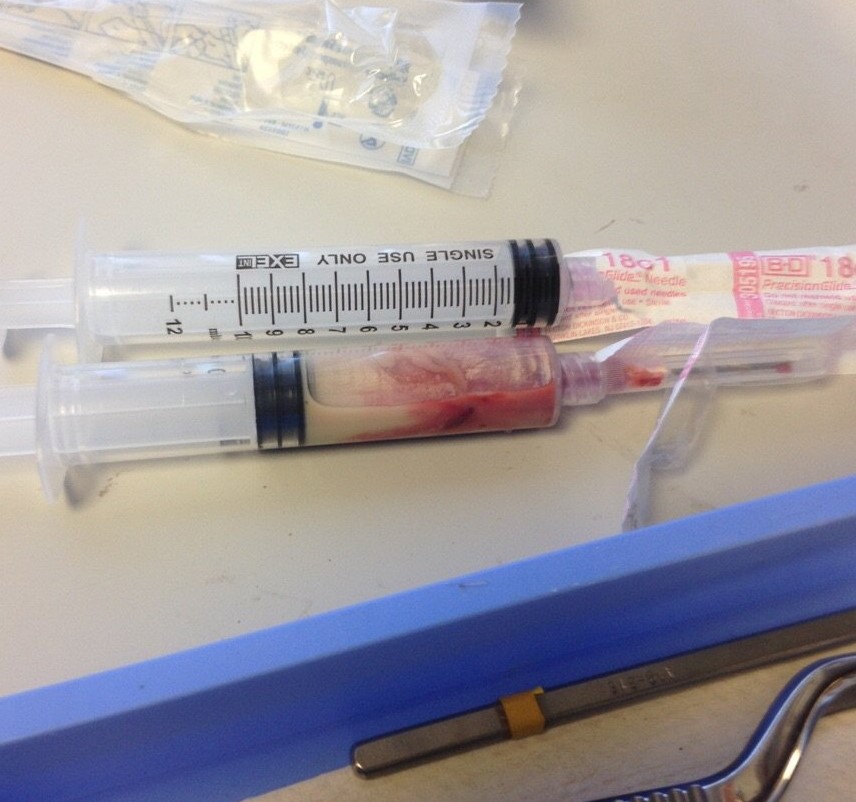
Infections of the spine are relatively rare compared to other spine conditions like slip disc. But if a spinal infection happens, it can cause significant damage which can cause paralysis or sometimes even be life threatening if not treated at the earliest. Spinal infections can affect the bones (vertebrae), the discs (cushions between the bones) and the fluid or the soft tissues in and around the spine.
Back pain or tender back is the usually the first presentation of spinal infection. However not all back pains are caused due to infections. The symptoms which when associated with back pain can serve as indicators of infections are: Back pain which is severe at night, fever and chills, Sudden mobility limitation with severe muscle spasms, accompanying headaches, weight loss, pain or difficulty while urinating, abdominal pain. Some spinal infections can also cause neurological problems. Symptoms of neurological issues related to a spinal infection may include loss of balance, weakness, vision changes, or an inability to speak, numbness and the inability to move, walk, stand or sit.
Causes
Spinal infections are usually caused by bacteria. Occasionally associated with other organisms like fungi. Infection from other parts of the body can reach the spine via blood stream or infection can directly reach the spine by direct spread. Urinary tract infections or chest infections (like pulmonary tb) can spread to the spine. Once it reaches the spine infection commonly affects the spinal discs. Once discs are involved, they begin to erode and collapse, with gradual spread of infection to other structures in spine, which results in back pain due to the inflammation. When the infection reaches the nerves and starts pressing on the nerves, it can result in weakness of the legs or arms with shooting radiating pain like sciatica.
Other predisposing factors for spinal infections include conditions which result in decreased immunity like prolonged steroid use, advanced age, HIV, intravenous drug use, cancer, malnutrition and diabetes.
Diagnosis
Blood tests and imaging (radiology play a major role in diagnosis of infections. Blood tests include – Complete Blood count, ESR and CRP. Imaging studies include x-rays, MRI and CT scans. MRI is the most important investigation in characterisation of infection. Use of contrast injection (given in veins of the patients) helps in better delineation and identification of infection in MRI. CT scans help in identifying the amount of bone destruction, which in turn helps in surgical planning if indicated. Biopsy is one of the key components of spine infection diagnosis. Biopsy is a procedure of collecting sample of the infection tissue for diagnosis. Biopsy can be done by open method in operation theatre or under CT guidance under local anaesthesia in the radiology room. Biopsy helps to identify the type of bacteria and also helps to rule out some cancer which can present very similar to an infection. One of the problems with biopsy, is the result can come out negative, needing a repeat biopsy procedure in some instances.
Treatment
Both surgical and non-surgical methods can be used for treatment of spinal infection based on the individual case. If there is no imminent or present danger to the structure of spine and the function of the nerves, antibiotics based on the culture reports of the biopsy are the usual line of treatment. In more extensive cases where the structure of the spine sis damaged or the nerves are in danger or already damaged – surgical evacuation of infective pus with stabilisation becomes the option. If a spinal infection can be treated using non-surgical methods, a patient is usually started on an antibiotic or anti-fungal therapy. This is often conducted through a long-term intravenous treatment and possibly extended hospital stay. If non-surgical treatments fail to control the infection, or it’s determined that the infection is too deeply involved in the spine, then also surgery will be needed. The surgery is meant to remove the infection and clean the affected area. Surgical intervention can also permit a closer look that will ensure all of the infection is removed, plus allow better blood flow to the affected areas and stop any further neurological damage.
Though it is true that all back pains are not infections, it is true that all back pains need to be evaluated to by spine health expert due the impact which back pain can have if caused by more sinister diagnosis. It is important to remain vigilant about such back pains as described in the blog and meet the nearest spine surgeon or spine specialist at the earliest.